Tel: 0086-17121115666
Email: sales@wiremeshfence.com
The wind dust fence works on aerodynamics principles. When conducting environmental wind tunnel tests on-site, we shape it into specific geometric forms, with various hole shapes and openings. This design lets circulating air (strong wind) pass through, creating disturbed airflow inside the wall. This method weakens the wind on the inside, making it less powerful than on the outside, and in some areas, there's no wind at all. This helps keep dust from blowing around.
Shear bending: We start by cutting and bending the material. The quality of our products comes from using advanced equipment for these tasks.
Punching: Next, our skilled workers punch holes in the wind dust fence, ensuring high-quality results.
Molding: For the third step, we use equipment that shapes the material into wind-proof nets. This equipment can produce nets with double or triple peaks, up to 10 meters long or more.
Cleaning: The fourth step involves cleaning the nets to prepare them for the next stage. The quality of the cleaning affects how well the surface coating will stick.
Electrostatic spraying: Finally, we spray the surface of the wind dust fence. This coating protects them from corrosion and rust, even in harsh conditions.
1. Dust Suppression: The primary benefit of wind dust fences is their ability to significantly reduce the amount of dust that gets airborne. By trapping and settling dust particles, these fences help maintain cleaner air, which is especially beneficial in areas prone to dust storms or where particulate matter can pose health risks.
2. Wind Speed Reduction: These fences are engineered to decrease wind velocity, which not only helps in dust suppression but also reduces the erosive impact of wind on soil and structures. This is particularly valuable in agricultural lands and construction sites where wind erosion can be a problem.
3. Environmental Protection: By limiting the spread of dust, wind dust fences contribute to environmental protection. They help preserve soil quality, protect plant life from abrasive wind and dust, and reduce the deposition of dust on water bodies, thereby supporting aquatic ecosystems.
4. Improved Safety and Visibility: In areas like highways and construction sites, blowing dust can significantly reduce visibility and pose safety risks. Wind dust fences improve safety by enhancing visibility, thereby preventing accidents and ensuring the well-being of workers and the public.
5. Cost-Effective Maintenance: These fences are designed for durability and long-term use, requiring minimal maintenance. Their self-cleaning and weather-resistant features make them a cost-effective solution for dust and wind control.
1. Industrial Sites: Power plants, coal mines, and manufacturing facilities use wind dust fences to control the dispersion of industrial dust, thereby reducing environmental pollution and enhancing worker health.
2. Agricultural Areas: Farms and agricultural lands benefit from wind fences by protecting crops from damaging winds and preventing soil erosion, thus contributing to sustainable farming practices.
3. Construction and Demolition Sites: These wind fence are essential in construction and demolition areas, where they prevent dust from spreading to nearby communities and maintain air quality.
4. Transportation Infrastructure: Airports, highways, and railway stations install wind fences to ensure visibility and safety by controlling dust and debris, especially in arid regions prone to dust storms.
5. Urban and Residential Areas:Wind dust fence To protect residential areas near industrial sites or natural dust sources, wind dust fences are employed to improve air quality and living conditions for communities.
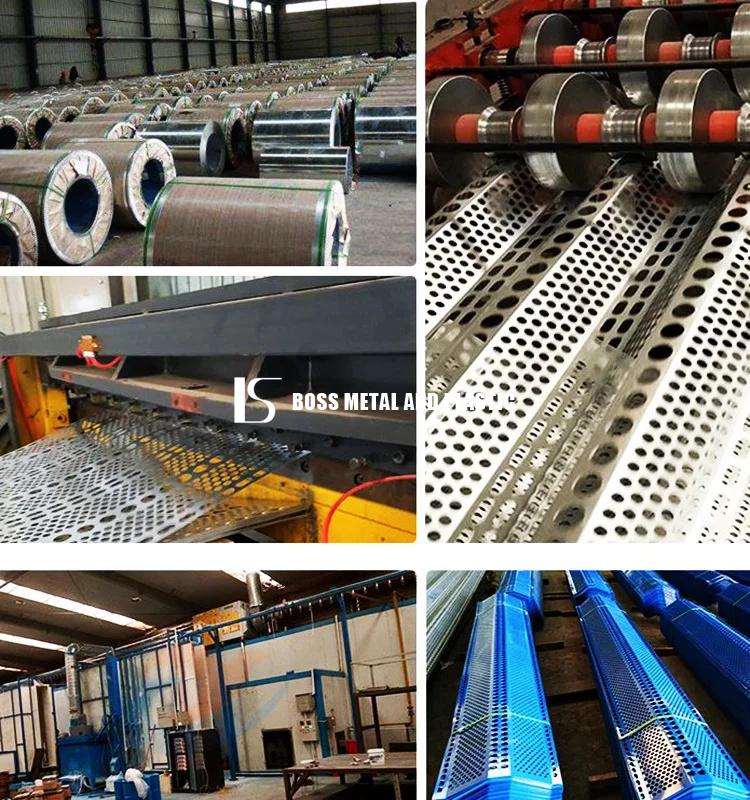
A wind dust fence is designed to block and control dust carried by the wind. It's treated to last longer under the sun, resist flames, and handle strong impacts like hail. The fence is also made to stay clean on its own, breaking down dirt with sunlight and washing away dust with rain, so it doesn't need much maintenance.
Blocks UV Rays (Aging Resistant): The product has a spray coating that absorbs UV rays from the sun. This slows down the material's oxidation, making the product last longer and resist aging. It also keeps UV rays from passing through, protecting the material from sun damage.
Flame Resistant: As it's made of metal, the product naturally resists flames. It meets fire safety and production standards.
Impact Resistant: The wind dust fence is strong and can handle impacts, like from hail or strong winds. It's tested by dropping a 1 kg steel ball from 1.5 meters high onto it. The product doesn't break or get holes.
Anti-static Surface: The wind dust fence's surface is treated to be anti-static. Sunlight makes it break down organic dirt on its surface. It also loves water, so rain can easily wash away dust. This means it cleans itself and doesn't need upkeep.
Type wind dust fence | Picture | Material | Thickness | Width | Height of Peak | Length |
Unimodal |
| Steel sheet, Galvanized sheet | 0.5-1.0 mm | 250-500 mm | 50-100 mm | Less than 8 m |
Double peak | Steel sheet, Galvanized sheet | 0.5-1.4 mm | 400-600 mm | Not Specified | Less than 8 m | |
Three peaks | Steel sheet, Galvanized sheet | 0.5-1.4 mm | Less than 830 mm | Not Specified | Less than 8 m |
People use wind dust fence in power plants, coal mines, coking plants, and coal washing plants to keep coal stored.
It's for keeping coal at ports, docks, and different storage yards.
You can use wind dust fence in open-air storage areas for steel, building materials, and cement.
It's good for storing coal at railway and highway stations that move coal around.
Workers use it for temporary setups at construction sites and road projects.
It helps in places where people work and live in remote areas.
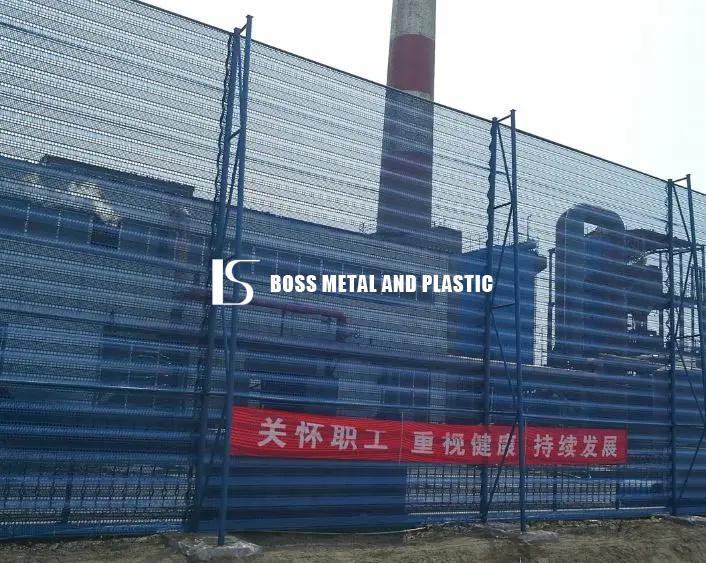
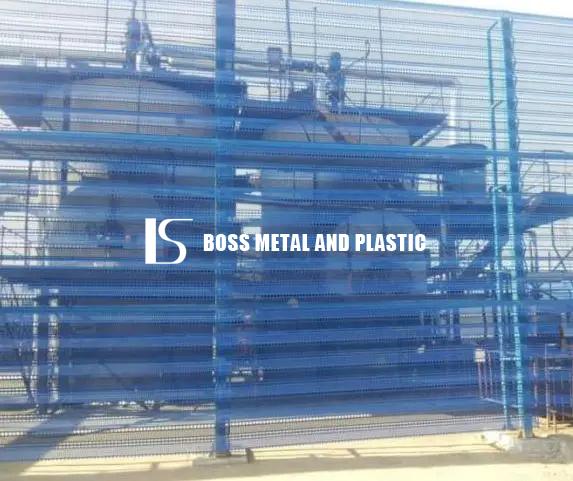
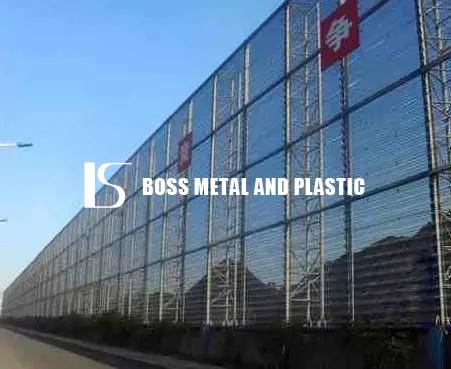
Harsh winds can make it hard for people to work and live. But, if you put up a wind dust fence in the right spot, it can slow down the wind in that area. This makes the place nicer by improving the air and creating a better small climate for work and living. A single-layer wind and dust wall can cut down dust by 65 to 85%. If you use a double-layer wall, it can block more than 95% of the dust.
When designing and building, we split the work into four main parts. The first part is making the underground foundation for the dust net. You can do this by using precast concrete blocks or pouring concrete right at the spot where the wind dust fence will go.
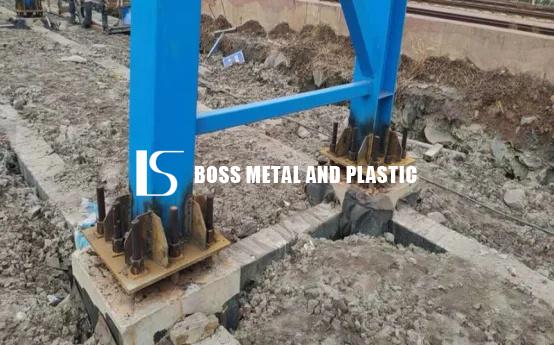
The second part involves the support structure for the wind dust fence. We design this based on wind speed. Steel brackets hold up the wind and dust suppression walls. These brackets are strong enough to stand up to strong winds and also look good. We use steel pipes for the main part of the bracket and reinforced concrete pillars to support the wind-proof dust-reducing wall.
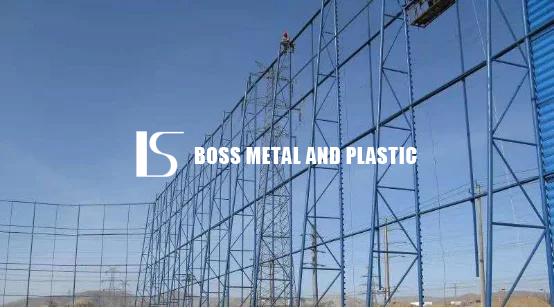
The third part is putting up the wind shield. It lasts for 15 to 20 years and can handle temperatures from -40 °C to +80 °C. You attach it using screws and a pressure plate. The exact size, how much it bends, and how open it is should be planned based on what the yard is like. This way, the wind dust fence works best for that specific place.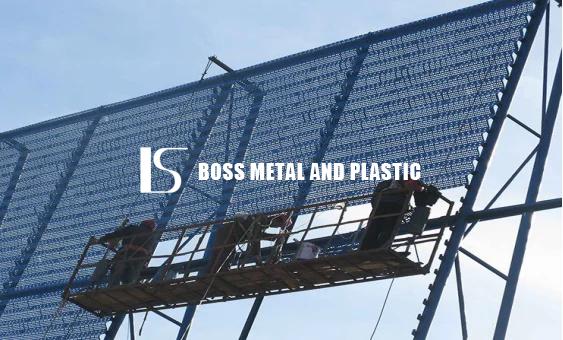
The fourth part is about building a retaining brick wall. To stop coal mud water from spilling over after it rains or snows, you can build a brick wall that's 1.2 to 1.5 meters tall at the bottom of the windshield wall. This helps keep the area clean and dry, especially near the wind dust fence.
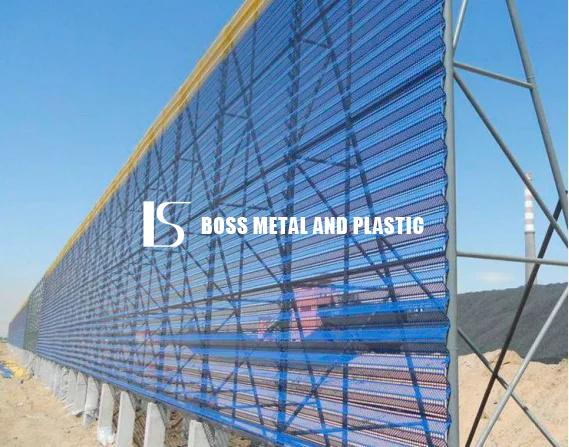
A wind dust fence is a practical solution designed to reduce wind speed and control dust in various environments, such as industrial sites, construction areas, and open storage yards. By installing these fences, we can create a safer, cleaner, and more comfortable environment for work and everyday life. They are built to withstand harsh weather, from extreme cold to high heat, and have a long service life of 15 to 20 years. The design includes a strong support structure, efficient wind and dust suppression capabilities, and additional features like a retaining brick wall to manage runoff from rain and snow. Overall, wind fences play a crucial role in improving air quality, protecting the environment, and enhancing the quality of life for people in affected areas.
Looking for affordable Perforated Stainless Stee
Explore the factors influencing garrison fencing
Discover the convenience of Temporary Chain Link
Contact: Frank
Phone: 0086-17121115666
Tel: 0086-318-7883678
Email: sales@wiremeshfence.com
Add: 053600 B125-B135 Ziwu Indutries Zone Zi Wen Town Anping County Hengshui Heibei Province China
We chat
